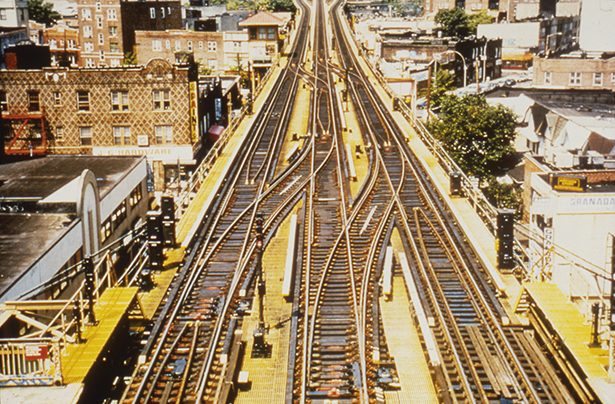Case Study: New York Transit Walkways Largest Fiberglass Grating Installation in History
 The New York Transit Authority has 174 miles of elevated train tracks. The fiberglass maintenance walkways that run parallel to various sections of this track comprise the largest fiberglass grating installation in history. Fiberglass walkways, manufactured by Strongwell-Chatfield Location, replaced wooden walkways throughout the system and improved worker safety while dramatically cutting maintenance costs.
The New York Transit Authority has 174 miles of elevated train tracks. The fiberglass maintenance walkways that run parallel to various sections of this track comprise the largest fiberglass grating installation in history. Fiberglass walkways, manufactured by Strongwell-Chatfield Location, replaced wooden walkways throughout the system and improved worker safety while dramatically cutting maintenance costs.
The wooden walkways were slippery when wet and required constant maintenance, while fiberglass has a non-slip, grit surface. In addition, fiberglass is high impact and corrosion resistant, never deforms, and is electrically non-conductive. Fiberglass walkways require virtually no maintenance and will last over four times as long as wooden walkways.
The customer discounted using steel for the new walkways because it conducts electricity, and since subways operate on electricity, the fewer electrical conductors (in the system) the better. Fiberglass in this instance is an electrical insulator.
The project, begun in 1983, is being completed in phases. The grating is 211 high x 0.611 wide at bottom x 111 wide at top and was installed in 3' x 18' sections. A custom resin was developed to meet New York Transit Authority specifications for low smoke and low toxicity.
| TECHNICAL DATA |
|---|
| Product: Fiberglass Grating Walkways |
| Process: Pultrusion |
| Materials: Fiberglass reinforced custom resin |
| Sizes: DURAGRID® T-5000 2" grating |
| For: J. T. Ryerson & Son, Inc. |
| User: New York Transit Authority |
One of the benefits of the fiberglass walkways is the open spaces which allow the snow and rain to fall through and prevents debris from getting trapped under the walkway like it did with the solid wooden walkways. In addition, the non-skid grit surface of the grating gives workers better traction and since fiberglass doesn't warp or rot, tripping is not a concern for workers.
The Strongwell-Chatfield Location assembled the T-bars into custom-sized panels before shipping them to the job site to utilize the entire panel of grating, eliminating waste common with standard sized panels. The average panel for the Transit Authority was 18 ft. long and 3 ft. wide.
The fiberglass walkways are pultruded in a safety yellow color that doesn't require painting. Since the fiberglass grating is resistant to de-icing salts, urban pollution and a wide range of chemicals, it requires little to no maintenance.